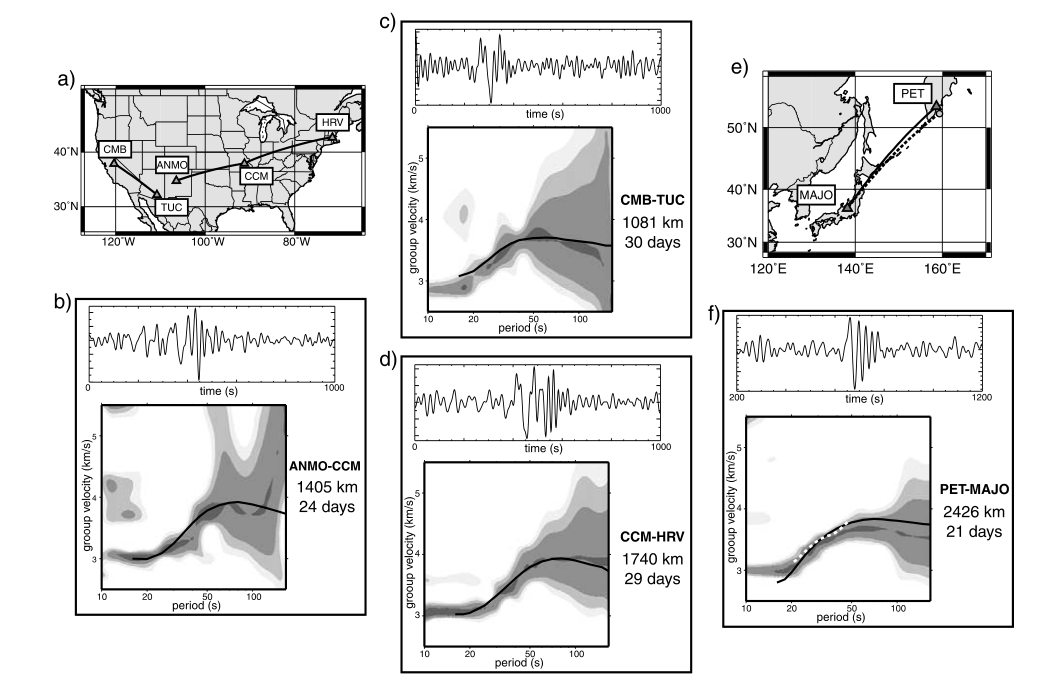Development of the Microtremor & Ambient Noise Tomography Method
Jun 06,2025
In 1957, Aki first used micro motion signal to calculate surface wave dispersion(Spatial Auto-correlation Method,SPAC), it assumes that the microtremor signal follows a stationary stochastic process in time and space.This paper by Keiiti Aki introduces the SPAC (Spatial Auto-Correlation) method for analyzing complex seismic waves, particularly microtremors, using statistical techniques. The method focuses on the spatial and temporal spectra of stationary stochastic waves to reveal the nature of the waves and the medium through which they propagate. The study aims to develop a method for dealing with complicated waves that do not fit traditional phase-based analysis, providing insights into wave propagation and medium characteristics.
Principle of the SPAC Method:
The SPAC method is based on the statistical analysis of seismic waves, assuming that the waves are stationary in both time and space. The key principle involves measuring the spatial auto-correlation of seismic wave amplitudes at different points to infer wave characteristics and medium properties. By analyzing the spatial and temporal spectra, the method can determine the direction of wave propagation, wave polarization, and dispersion curves, which are useful for deducing the structure of the medium. This approach is particularly effective for studying microtremors and other complex seismic phenomena where traditional phase analysis is insufficient.

However, due to the limitations of sesimic devices at that moment, Aki's method was not widely used until early 2000s, when seimologists found that the cross-correlation functions (CCF) can be used as the Empirical Green's Function (EGF) which contains useful information of underground structure. The paper by N. M. Shapiro and M. Campillo, 2004 demonstrated how we can derive coherent information about Earth's structure from cross correlations of ambient noise data (i.e., passive seismic records).

The authors computed cross-correlations of vertical component records of seismic noise from various station pairs separated by distances ranging from hundreds to over two thousand kilometers. They found that coherent broadband dispersive Rayleigh wavetrains emerge from these correlations, with group velocities similar to those predicted by global Rayleigh-wave tomographic maps derived from ballistic surface waves. This technique allows for new types of surface-wave measurements in both regional and global scales, providing valuable data for understanding Earth's crust and upper mantle structure.

*Aki, K., 1957, Space and time spectra of stationary stochastic wave with special reference to microtremors, Bulletin of Earthquake Research Institute
*https://doi.org/10.1029/2004GL019491
BLOG
CONTACT
Tel: 0086-0551-65327898 / 65327899
Fax: 0086-0551-65327899
E-mail: hfgwe@hfgwe.com
Add: 9th Floor, Building A, G3, Phase II, Innovation Industry Park,No. 2800 Innovation Avenue, High-tech Zone, Hefei city,Anhui Province, China

Mobile website
Hefei Guowei Electronics Co., Ltd.
Subscribe Us
We will contact you within one working day. Please pay attention to your email.
CopyRight:Hefei Guowei Electronics Co., Ltd. Powered by 300.cn SEO






